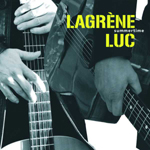This review page is supported in part by the sponsors whose ad banners are displayed below |
 |
 |
The very balanced and delicate sonic character of the Armonias makes for effortless musical fulfillment. In that sense the Armonia name fits the speaker’s sonic identity perfectly. There is no specific restriction on music compatibility and these speakers handle all musical genres with accuracy. In this price range many floorstanders tend to sound too bright and lean, delivering punched-up colors that become annoying in the long run. By contrast the Apertura floorstanders deliver beautiful tone with no excess emphasis, a rich midrange with accurate highs and controlled bass that does not call for particular room gain reinforcement. They are a fair compromise between articulation, speed, imaging and warmth. There was no obvious coloration, no underlying voicing structure that would have emerged over the long term as an intrinsic feature of the speaker rather than the recordings.
|
 |
The Armonias reproduced a precise balance of fundamentals and harmonics except for the top octave which seemed a bit recessed according to my Triangle/Vivid-trained listening habits but with good realization of a guitar's strings attacks. The Bireli Lagrene/Sylvain Luc Duet album [Francis Dreyfus Music, B001PQRL8C] highlighted perfect attacks and good decays and the timbre contrast between both guitarists was expressed fairly. The French speakers succeeded in reproducing involving levels of dynamic shifts without the too often forward effect that gives you the impression of zooming in on the guitar strings.
|
|
|
The Armonias did not betray any signs of stress during long guitar sessions and the result seemed to be focused on always high musical involvement. They reproduced every small nuance including the sustained upper harmonics of Sylvain Luc’s instrument even if not as insistent as it would have been over the Magellan Duettos and Vivid K1. Listening to Further Explorations [Concord, B005VR9AEE], the live spirit was nicely captured. The accurate three-dimensional image allowed for a deep realistic soundstage with lots of live ambience. I usually give a lot of attention to drums with this type of recording as in my opinion realistic tone and impact relies on an even balance between attacks and decays. That allows for a quite perfect illusion and the Armonias did it in a very accurate manner.
|
|
|
|
|
|
|
 |
On the Keith Jarrett ECM recording of The Goldberg Variations [ECR Records, B00004STOZ], the Apertura floorstanders demonstrated an overall excellent liquid articulation that was exempt from any harshness or excessive brightness in the treble. The level of ambient detail was nevertheless one step below the crystalline clarity of the Triangle Magellan and Vivid K1. Yet there was no sensation of lack or loss of substantial information, just a different voicing with a less energetic top end. Changing musical genre to approach more electric shores, the Armonias did not disappoint during high-level passages. It was certainly not the most suitable genre to highlight their remarkable timbre accuracy but they did demonstrate to be rather versatile speakers. Of course they won’t slam very hard or kick you physically during heavy passages but they delivered plenty of visceral uncompressed energy contrasting their apparent delicacy. |
|
|
 |
That was the case also for Queen’s A night at the opera [Island, B004M17ITY]. But it was also the case on the last live performance recording by Return to Forever The Mothership Return [Eagle Vision, B007FOH7QE], which seems really unforgiving for loudspeakers at any price.
|
|
|
|
| Big orchestral works such as Nikolaus Harnoncourt’s recent Walzer Revolution [Deutsche Harmonia Mundi, B006ZFKWNY] with the Concentus Musicus Wien also received fair treatment. In fact the Armonias delivered a well-organized soundstage with distinct colors and stunning dynamic shifts. One very surprising feature was their ability to be extremely delicate but also capable of a lot of weight when needed. This is not an easy exercise for any loudspeaker especially in this price range. The Apertura succeeded in preserving this duality without sacrificing tonal balance. I was definitely impressed by their versatility and involving nature. |
|
|
 |
Listening to Roberta Gambarini’s Easy to Love [Orkhestra, B000GEIOLC], her voice sounded naturally smooth, pure and plain with a discrete touch of triode-like presence. The Armonias delivered a strikingly fair balance, avoiding forward effects on the vocals while preserving small ambient details and clarity of phrasing. The Italian singer remained precisely placed in the center without being pulled or smeared to either side. The double bass was stunningly articulated for a simple two-way floorstander. |
|
|
|
|
|
 |
Conclusion. Summing up, the Armonias give a lot for the money. They are particularly attractive in consideration of what they don’t do. Many speakers of this market segment convey a specific perspective that often signals not merely aesthetic but also technical choices. The small Apertura floorstanders seem to be strikingly insensitive to any constraints or limitations despite their particular design. That makes them truly enjoyable, versatile and comfortable speakers in the long run. In their category they deliver first-class sonic qualities such as three-dimensional and very stable soundstaging, absolutely gorgeous diversified tone and an incredible sense of pace and rhythm. They escape all tendencies to brightness while still delivering more than just a polite sound. They remain very involving and lively under any circumstances. All this is the very essence of music and reveals the speakers' high-end pedigree. Highly recommended! |
|
|
 |
 |
|
 |